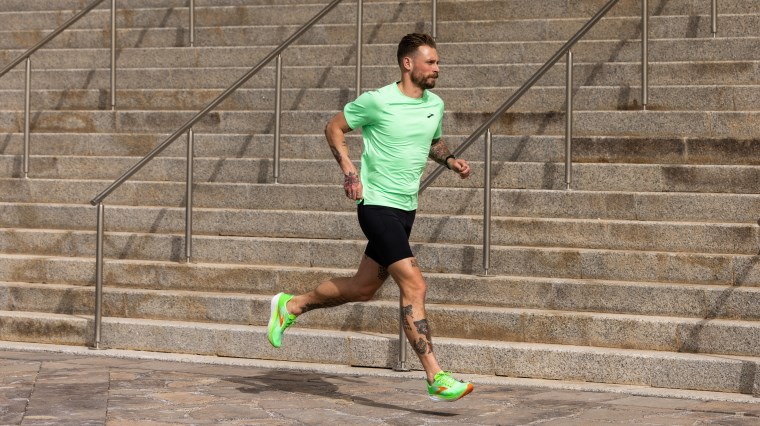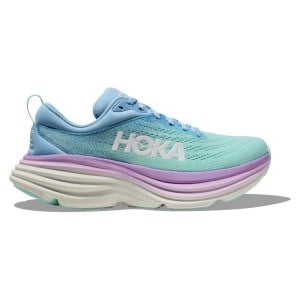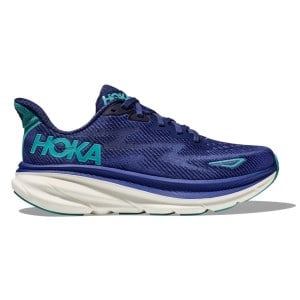How To Fix Knee Pain When Running And Improve Your Form

Struggling with knee pain on your runs? You’re not alone. But what if we told you that the culprit could be more than just the shoes you’re wearing? Let’s talk about some of the underlying causes of knee pain when running and the factors that interact with them.
Whether you’re a novice runner or a seasoned athlete, this guide could provide valuable insights into your training style and how you can keep your knees in top shape.
Understanding Knee Pain In Runners
If you’ve been training for sprints or marathons for a while, you may have felt that nagging pain in your knees. It’s a common issue among many runners, but what’s causing it? The answer isn’t so simple. Let’s break it down.
One common cause of knee pain when running is patellofemoral pain syndrome (PFPS). Often called ‘runner’s knee’ or ‘jumper’s knee’, this condition is common among young adults and young athletes but is also known to occur among non-athletes as well. PFPS can make it difficult to perform everyday activities when left untreated, and knee pain may be indicative of this condition developing.
PFPS could develop from running too much. Sometimes, discomfort can simply be caused by overtraining, as overuse could lead to stress on your knees. Overexertion could also be caused by poor posture, which in turn could put more stress on one or both knees than is strictly necessary.
Another common cause of knee pain when running is unique differences in your physiology. Sometimes, it’s just how you’re built: your feet may have a higher or lower arch than normal, which can greatly affect your gait when walking, let alone your running form.
Whether it’s your form, your gear, or just pushing yourself too hard, it’s crucial to address these factors. Keep an eye on your form, take a break when needed, and consider upgrading your gear from time to time. Your knees will thank you for it.
The Role Of Running Shoes In Knee Support
Your running shoes are the foundation of your run, especially when it comes to running support. While we strongly recommend seeking medical advice or guidance if you feel any pain when running, there are ways to take precautions and stay safe while you’re hitting the ground.
This is also where appropriate athletic wear comes into play. To an extent, specially designed athletic or running shoes can bridge the gap between your unique physical traits and the demands of your training.
Opt for running shoes with proper cushioning and arch support to distribute impact evenly. This can be a game-changer in reducing knee stress. Don’t skimp on this; your knees will thank you.
Brands like Saucony shoes or Hoka shoes have shoe lines that target certain running types and forms. Athletic apparel, such as running shorts or specially designed compression tights, can also add additional comfort during training.
Compression garments can improve blood circulation and reduce muscle fatigue, while moisture-wicking fabrics keep you dry, reducing the risk of chafing. Even something as simple as a well-designed pair of running socks can prevent blisters while you’re breaking in your new running shoes, allowing you to focus on your form rather than discomfort.
That being said, good form and mindful training are still key to minimising knee pain when running. Knee pain is a complex issue with multiple culprits, but there are steps that can be taken to lower the risks of it developing or progressing into a more serious condition.
💡KEY TAKEAWAY: The right gear can, to a degree, influence your running experience. From shoes that offer optimal knee support to quality running clothing that enhances performance, it’s ideal to invest in comfortable and high-quality athletic wear or gear, such as those offered at Sportitude.
Techniques To Refine Your Running Posture
Perhaps your posture is contributing to your knee pain when running. Are there any tips that could help correct this?
The answer is yes. If your knees are giving you grief, your running form might be the culprit, simply by applying pressure or strain to certain parts of your body.
Take your heels, for example. Heel striking is when your heel hits the ground first when you run. This creates a high-impact collision with the ground and could slow you down. Focus on your cadence; a quicker step rate can lessen the load on your knees, as can bending them to follow the flow of your movement.
You could also rotate your hips back, straighten your spine, or lift your chest (or even try a combination of these actions) to adjust your posture while running. This helps to evenly distribute the impact your body receives from hitting the ground.
Another way is to take more steps when you run. While it might sound counter-intuitive, it may actually minimise the force exerted on your knees based on your body type. For some runners, shorter strides help maintain a more consistent and efficient running rhythm.
Perhaps with a combination of the above techniques, you’ll not only run more efficiently but also reduce the impact on your knees.
💡KEY TAKEAWAY: Your running form is critical in managing knee pain, and each element plays a role in either alleviating or exacerbating knee stress.
The Perks Of A Supportive Running Community
Let’s face it, running is as much a mental game as it is a physical one. When your legs are screaming and your lungs are on fire, it’s your mental resilience that carries you through. But you don’t have to always go at it alone.
Being part of a community for any sport not only builds friendly camaraderie and sportsmanship but also offers a wealth of knowledge and support that can make all the difference in your training. From sharing tips on how to train safely and effectively to discovering quality athletic gear or equipment together, the collective wisdom of a running community like parkrun is invaluable.
Some of us run for self-improvement, some of us run for fun, and some of us run for various reasons in between. When knee pain kicks in and threatens to take us away from this empowering activity, you can rest assured that there are people within your community that you can reach out to for advice and surmount this challenge.
Your mind has the power to push your body beyond its perceived limits. And as with running, you just have to make that first step.
💡KEY TAKEAWAY: Your attitude powers your physical performance. By fostering a positive mindset and mental resilience, you’re setting yourself up for a more fulfilling and successful running journey.
At Sportitude, you’re not just buying gear – you’re making an investment in your training. With our help, you’ll find the premium products and expert advice you need to elevate your running experience from the first step to the finish line.


